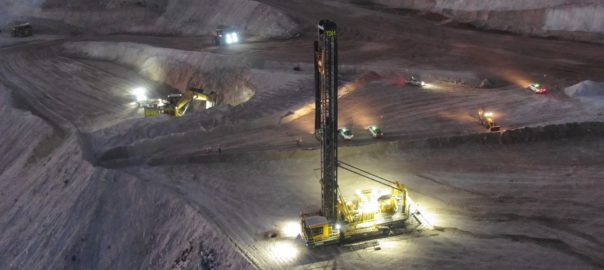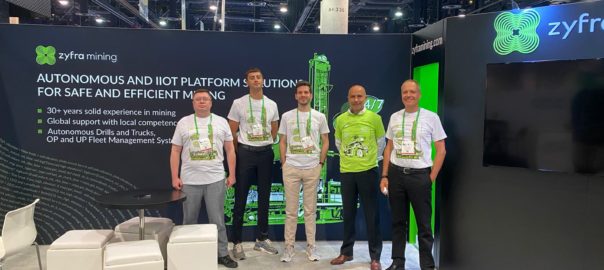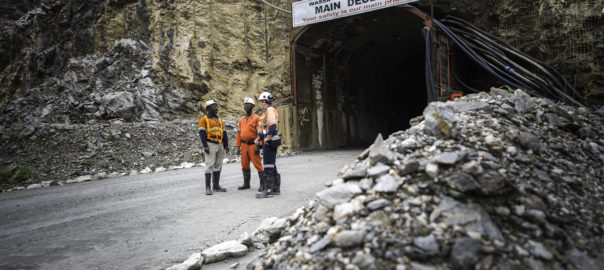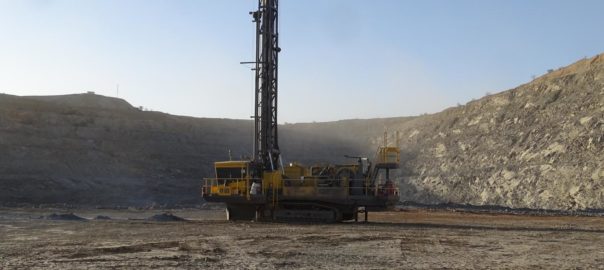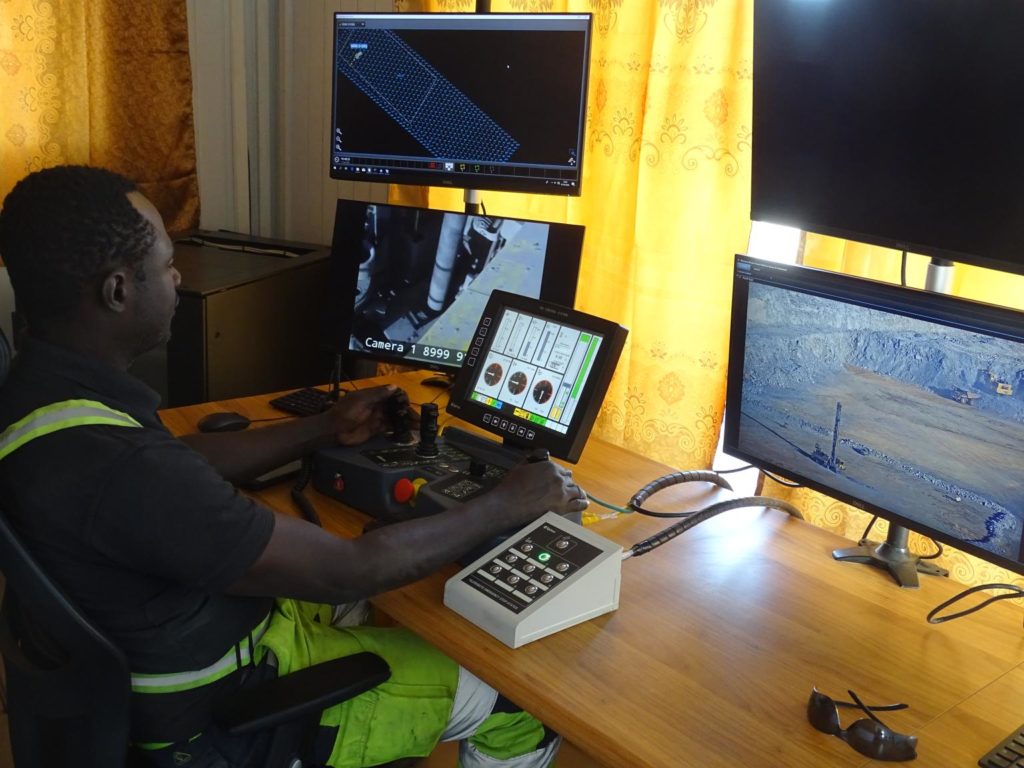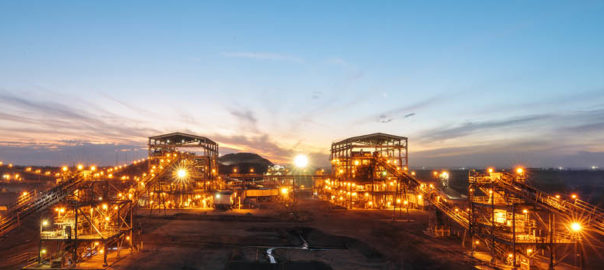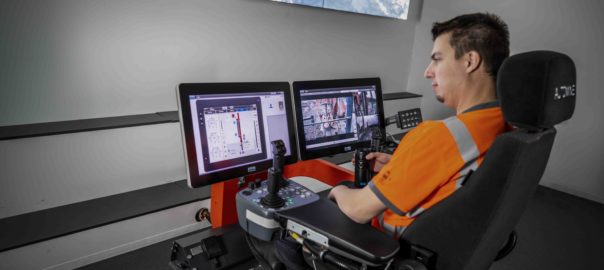Anglo American’s automation plans for its Quellaveco mine in Peru are starting to take shape, with its first automated trucks having started up in “pre-mining” mode last year and now automation-ready drills on site ahead of first ore production later this year.
The company’s most digital and autonomous mine yet, Quellaveco is expected to produce 300,000 t/y of copper over the first 10 years of the mine from an orebody that currently has around 1,300 Mt of reserves.
In the company’s December quarter production results today, it said construction of the project was progressing to plan, with first ore mined in October and first copper concentrate production expected in the middle of 2022.
In the first half of 2021, the operation started up four of a planned fleet of 27 autonomous Cat 794AC haul trucks as one element in a range of technologies that will help to make Quellaveco Anglo American’s first 100% digital mine.
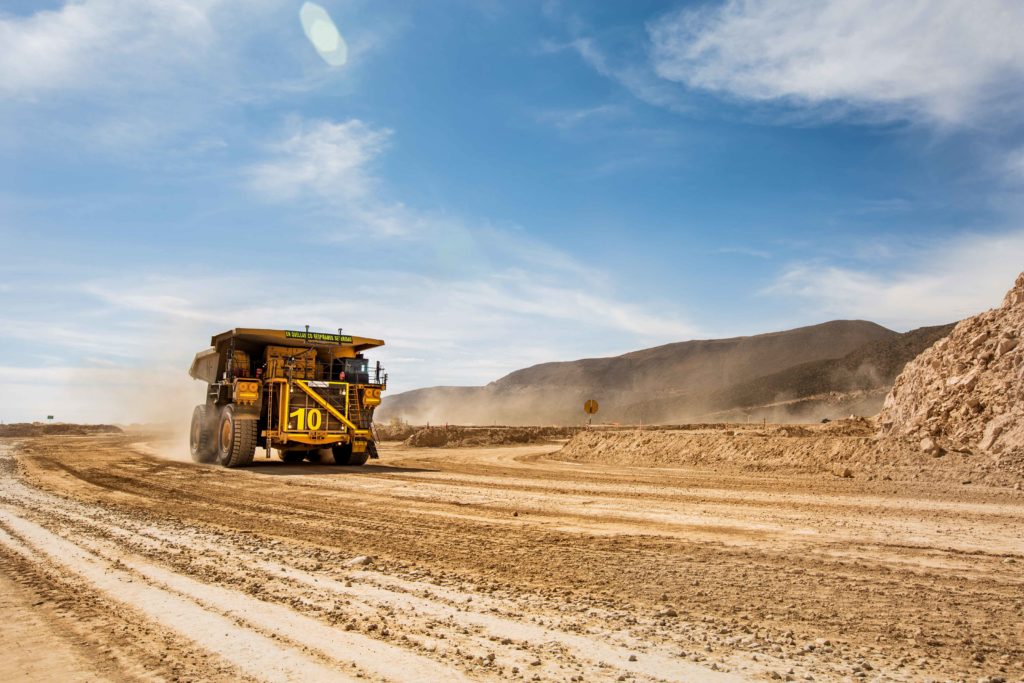
Now, the company has drill rigs on site that, by the end of this year, should be fully integrated into its in-country remote operations centre. The rigs – six fully autonomous Epiroc Pit Viper 351s and three tele-remote SmartRoc D65s – will eventually be overseen from this remote operations centre.
IM put some questions to Tito Cacho, General Manager of Quellaveco, to find out more about these rigs and what led to the planned automation leap at the mine.
IM: How did your experience with Epiroc on developing and implementing a new tele-remote drilling project at Los Bronces influence the decision to implement a fully autonomous drill fleet at Quellaveco? Did many of the people that implemented the Los Bronces project come over to Quellaveco?
TC: One of the objectives of Anglo American has been building a modern and fully digital mine at Quellaveco, incorporating the latest technologies to make this an even safer, productive and sustainable mining operation. A team of Anglo American engineers that were involved in the Los Bronces implementation have assisted in some aspects of the project in Quellaveco, bringing the benefits from our experience gained in Chile.
IM: What qualities does Quellaveco as an asset have in terms of applying autonomous drilling (aside from the fact it is a ‘greenfield mine’ you can design around automation)?
TC: We believe that Quellaveco will set a new standard. Through our experience with automation, the industry is driving towards safer and more reliable operations. This can make a significant difference not only to the mining operations itself but for our stakeholders who increasingly demand more sustainable operations.
Our team has been developing processes and procedures to build autonomy into the operational culture from day one. We are developing multifunctional skills in our operators and technicians, so that they learn about new roles and equipment operation, giving us the flexibility for people to work in any part of the process. The enthusiasm and willingness to learn and work with this new technology that we have seen in all the groups in Quellaveco has been an incredible asset.
IM: What other benefits stood out to you when evaluating fully autonomous drilling at the asset (safety, productivity, etc)?
TC: Safety is the primary benefit, and, as you know, is our most important value at Anglo American. We can distance an operator from areas of risk and put them in an environment that is safer, with less exposure to dust, noise and vibration. The operator becomes an autonomous drilling controller and is more comfortable and in a better ergonomic position. In addition, we have been able to improve the use, efficiency and precision of the equipment, and the ability to control multiple machines per person are notable benefits over manual operation.
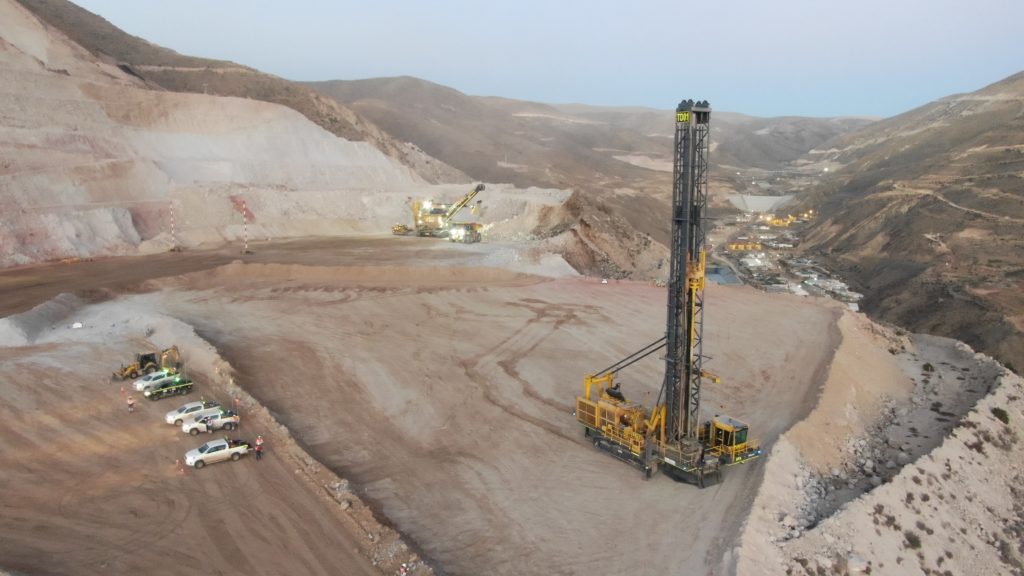
IM: How easy is it to implement fully autonomous drilling operations in Peru from a regulatory perspective? How does it compare with other countries?
TC: Anglo American’s approach is engaging with regulatory authorities from the beginning, and that is what we have done in Peru. We believe our stakeholders see the advantages of having a modern and fully digital mine operating in the country, from a safety, efficiency and sustainability perspective.
IM: How many rigs out of the “multiple” drill rigs you ordered from Epiroc will be autonomous? What does the timeline look like from here in terms of them reaching their capacity? When will their control and oversight be integrated into the remote operations centre?
TC: Quellaveco will have six Pit Viper 351s that operate fully autonomously and three SmartRoc D65s that operate in tele-remote (operator controlled from a distance with some autonomous functions). We aim to integrate full control and oversight of the drill fleet into the remote operations centre by the second half of this year.







